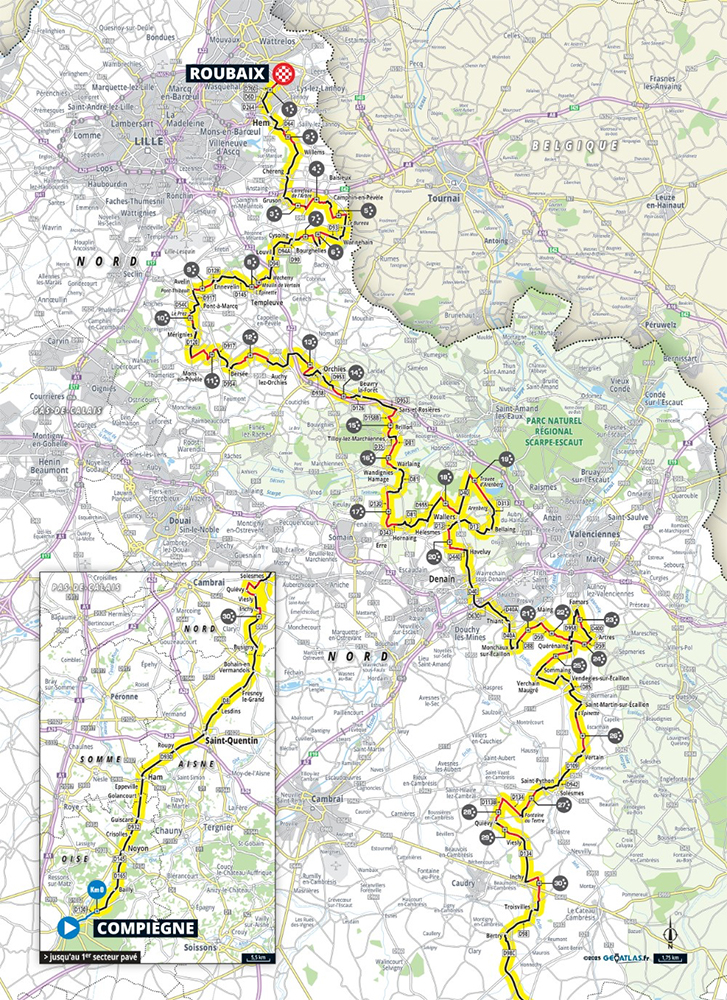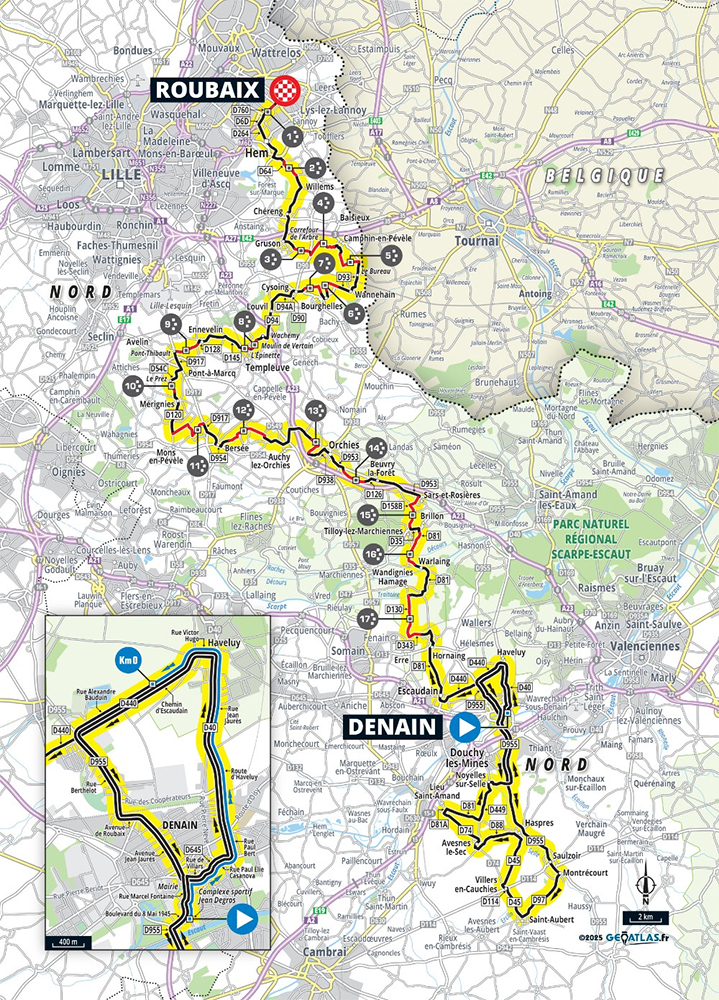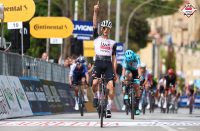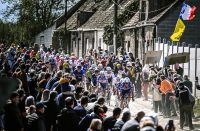

The riders on the 122nd edition of Paris-Roubaix, which will take place on Sunday 13th April, will be taking starter’s orders in Compiègne to cover a 259.2-km route to the Velodrome in Roubaix. The changes made to the route include a sequence that will see an increase in intensity just before tackling the Trouée d’Arenberg cobbles. The immediate approach to this key section has also been modified.
The 5th edition of Paris-Roubaix Femmes avec Zwift will take place the day before, on Saturday 12th April, on a route strictly identical to the one in 2024, with a total distance over the cobbles of 29.2 km, spread over the 17 sectors corresponding with the finale of the men’s race.
For cobble lovers, there will be five courses on the menu during the weekend, starting on Saturday, when thousands of amateur cyclists swing into action, as they get to grips with one of the three distances to choose from on the Paris-Roubaix Challenge. As a curtain raiser for the men’s race, the under-18s will set off for the velodrome from Lécelles, with 111 km to cover and 17 cobbled sections to tackle, while the under-23s will do battle over 163 kilometres (and 26 sections) between Le Cateau-Cambrésis and Roubaix.
Each cobble potentially holds a surprise in store, or even an opportunity. On Paris-Roubaix, vigilance is the watchword throughout the 259.2 kilometres between Compiègne and Roubaix, all the more so on the 30 cobbled sections on the programme. The first will loom into view after around one hundred kilometres, on exiting the village of Troisvilles (after 95.8 km). It often plays host to a lively struggle but the tension will mount as hands and legs start to ache, with the mind already focused on the prospect of the Trouée d’Arenberg. It is indeed in the build-up to this section of cobbles that Thierry Gouvenou has unearthed a gem, in the form of a small loop that adds two sections to the route around the municipality of Quérénaing: the section at Artres (#24, after 130.9 km, 1,300-m long) and the one at Famars (#23, after 133.8 km, 1,200-m long), which will also be on the route of the Denain Grand Prix and will host a stage finish on the Four Days of Dunkirk this year. “They are not especially difficult portions,” explained the race director, “but by introducing them here, it provides us with a sequence of five sectors without virtually any tarmac”. After this series of jolts, there will be approximately thirty kilometres to the Trouée d’Arenberg (#19, after 163.9 km, 2,300-m long), where a chicane was installed last year in response to the riders’ concerns about the pack’s speed on entering this frightening forest track: “This year, we have found an alternative that allows us to slow down the riders in a more fluid manner, via a small detour that runs alongside the mining site in Arenberg. With this introduction, there will be four right angle corners in the kilometre before the Trouée d’Arenberg”. Following this section that will sort out the pretenders for victory from the also-rans, the riders will still have to deal with two sections of the highest difficulty: Mons-en-Pévèle (#11, after 210.6 km, 3,000-m long) and the Carrefour de l’Arbre (#4, after 242,1 km, 2,100-m long).
The route on the Paris-Roubaix Femmes avec Zwift has not been modified for the 5th edition, the start of which will again take place in Denain, for 148.5 kilometres of roads and cobbles until the finish in the velodrome. The first four editions witnessed very different scenarios, with a long-haul solo triumph by Lizzie Deignan (in 2021), an attack from halfway by Elisa Longo-Borghini (in 2022), a small breakaway from which Alison Jackson took victory (in 2023) and a modest group sprint won by World Champion Lotte Kopecky (in 2024). The race is therefore wide open for a battle in which the women riders will tackle the last 17 sections of the men’s race, totalling 29.2 km of cobbles, including the sections of Mons-en-Pévèle and Carrefour de l’Arbre.




